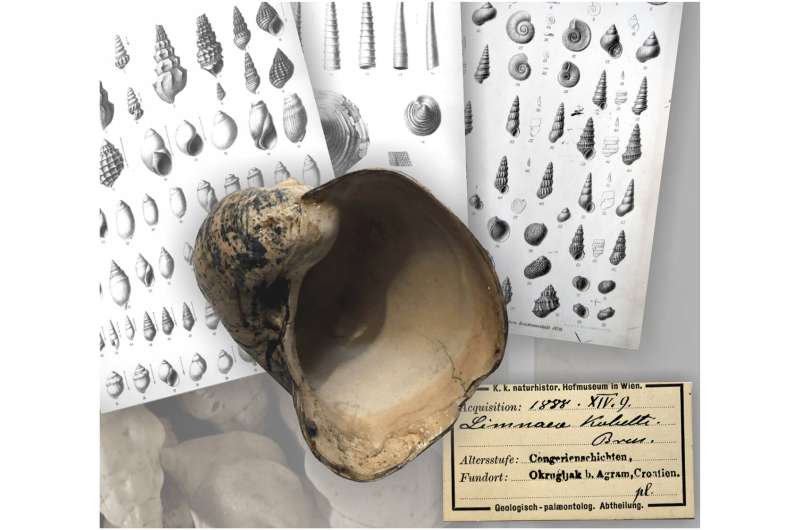This article has been reviewed according to Science X's editorial process and policies. Editors have highlighted the following attributes while ensuring the content's credibility:
fact-checked
peer-reviewed publication
proofread
Long-lived lakes as a driving force behind the evolution of freshwater snails

In long-lived lakes that existed for millions of years freshwater snails developed a particularly high diversity of species. A new study by SNSB paleobiologist Thomas A. Neubauer now shows the importance of these ecosystems for the evolution of freshwater snails on a global and deep-time scale.
Neubauer has summarized the evolutionary history of snails in freshwater ecosystems over the past 340 million years. Analysis of literature and available data on distributions and diversity of species through time led to a new understanding of long-lived lakes as islands of evolution.
Snails (Gastropoda) are a stroke of luck for paleontologists: because of their hard shells, these animals are very often preserved as fossils. Snails therefore form an important and well represented group of animals in the fossil record of Earth's history. Most snail species lived in the sea, but fossils of terrestrial and freshwater snails are also commonly found by paleontologists.
Neubauer, curator at the Bavarian State Collection of Paleontology and Geology (SNSB-BSPG) has compiled the most extensive data set to date for fossil freshwater snails in a review to identify patterns and relationships in their evolutionary history. He analyzed the global expansion and distribution of species from their early beginnings in the Carboniferous period, about 340 million years ago, to the Ice Age (Pleistocene), about 12,000 years ago. The data are published in the journal Biological Reviews.
The new study on the evolutionary history of freshwater snails has now shown, among other results, that so-called long-lived lakes were the driving force behind the evolution of snails. These lakes often existed for hundreds of thousands or several million years in Earth's history.
In these ecosystems, the snails developed a particularly high diversity of species, often with special morphological adaptations. An example from the recent geological past is Lake Pannon, which stretched between Austria in the west and Romania in the east about 11.6 to 4.5 million years ago. At its greatest expansion, the lake covered an area about two-thirds the size of Germany. This paleolake preserved the highest known diversity of freshwater snails in the world so far.
During the more than 7 million years of its existence, Lake Pannon was home to about 580 species and produced many unique evolutionary lineages. Today's long-lived (ancient) lakes, such as Lake Ohrid in the Balkan Peninsula, Lake Baikal in Siberia, and Lakes Malawi and Tanganyika in East Africa, are comparable islands of evolution.
"These rare ecosystems are archives of evolution," Neubauer says. "Their longevity—we're talking often several million years—makes them very different from most other lakes, which are often only a few thousand years old. They allow a closer look into how species change through time. Time plays the decisive role in evolution. Only in long-lived ecosystems species have enough time to 'experiment.' The most extraordinary examples of morphological changes, special ecological adaptations or size increases in snails come from long-lived lakes. Similar examples exist for many other animal groups."
Long-lived lakes have influenced the diversity and distribution of freshwater gastropods worldwide. Their formation and longevity are determined by tectonic and climatic processes over millions of years. These ancient ecosystems are rare and important islands for the development of freshwater organisms—a so-called ecological opportunity, according to Neubauer, where animals and plants have been able to flourish undisturbed over long periods of time and continue to do so today.
More information: Thomas A. Neubauer, The fossil record of freshwater Gastropoda—a global review, Biological Reviews (2023). DOI: 10.1111/brv.13016
Journal information: Biological Reviews
Provided by Staatliche Naturwissenschaftliche Sammlungen Bayerns





















